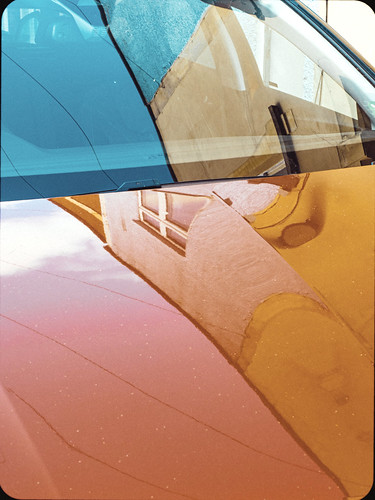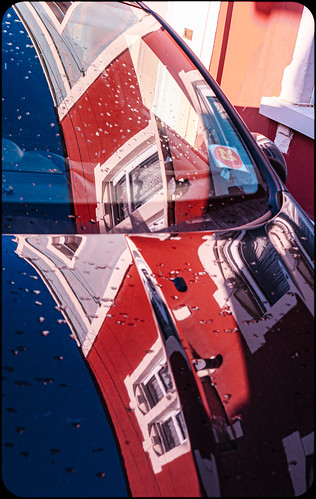From the category archives:
Academia
… is set out over the fold. I’m confident readers who take a little time to think about it will realise it’s far superior to existing policy, and to any alternative proposed so far. (Previously posted in 2011).
[click to continue…]
Philip Roth has been in the news, as has Palestine. By sheerest coincidence, a piece I’ve been mulling over—on the uncanny convergence between the lives and concerns of Roth and Hannah Arendt, particularly when it came to Jewish questions such as Zionism—came out in The New York Review of Books this morning. It starts with the Blake Bailey controversy, but goes on to explore what the surprising parallels between these two writers, who knew and respected each other, has to say about the left, Jewish identity politics, and American political culture today.
In 2014, the mystery writer Lisa Scottoline wrote an instructive essay for The New York Times about two undergraduate seminars she took with Philip Roth at the University of Pennsylvania in the 1970s. One of the courses was the literature of the Holocaust. Hannah Arendt was on the syllabus.
In his five-page discussion of those years at Penn, Roth biographer Blake Bailey makes no mention of this course or Arendt. Instead, he focuses on the other course, “The Literature of Desire,” and Roth’s erotic presence inside and outside the classroom. In the wake of the allegations of sexual assault and inappropriate behavior that have been made against Bailey, the omission may seem small or slight. Yet it is telling. As Judith Shulevitz argues in a searching analysis of the allegations and the biography, Bailey is as incurious about Jewishness as he is about the reality of women. When the two come together in the form of Arendt, his interest seems, well, nonexistent.
The result is a life stripped of one of its vital currents. Arendt was a real presence for Roth, and the unexpected convergence between their biographies and concerns, particularly regarding Jewish questions, is as uncanny as the doubles that populate Roth’s novels.
The difference between the two writers is obvious. She was born in Germany in 1906; he was born in Newark in 1933. She fled Hitler and never looked back; he fled his parents and kept going home. She wrote The Human Condition; he wrote Portnoy’s Complaint.
Yet, throughout the postwar Jewish ascendancy in America, as other writers and scholars eased their way into the conversation, Arendt and Roth distinguished themselves—not by stirring up the little magazines but by contending with the Jews. Summoning the anxious wrath of a still vulnerable community, Roth and Arendt occupied a singular position: defending the margin against the marginalized, refusing the political pull and moral exaction of an embattled minority. Today, at a moment of rising anti-Semitism and increasing polarization, when the tendency, even among writers and intellectuals, is to circle the wagons in defense of team and tribe, their shared archive of heresy among the heretics pays revisiting.
You can read on here.
(Overdue again!) Another open thread, where you can comment on any topic. Moderation and standard rules still apply. Lengthy side discussions on other posts will be diverted here. Enjoy!
Note: Unfortunately there appears to be no way to turn moderation off selectively, so the discussion here will be a bit slow. Still looking into options.
“Ye higher men, free the sepulchres, awaken the corpses! Ah, why doth the worm still burrow? There approacheth, there approacheth, the hour, — — There boometh the clock-bell, there thrilleth still the heart, there burroweth still the wood-worm, the heart-worm. Ah! Ah! THE WORLD IS DEEP!”
– F. Nietzsche, Thus Spoke Zarathustra
So I ran another of those Twitterpoll thingies and it was decisive. Seven people voted, including one rubbernecker who likes to watch. And so the people have spoken! So I’m back to explaining jokes, like before. (Racking numbers like those, I should start a Nietzsche joke explanation Substack. Which is to say: webcomics is hard, kids. Like the King said, ‘comics will break your heart.’)
The questions was basically: what’s up with pages like this? [click to continue…]
So, I promised reflections on Nietzsche’s Zarathustra and Seuss, to complement my ongoing brilliant double-parody, with special reference to Seuss’ late ‘cancellation’ – the withdrawal of six books from publication. I did muse a bit on Twitter. The best metaphor for it is: Seuss is the Evergiven of kid’s lit. All right, I’ll resay it a bit.
Seuss: he’s so big, if he runs aground on something – like some racist drawings in If I Ran the Zoo – he’s tough to ‘refloat’. Seuss Inc. had a branding problem, therefore, with these old books. They are really old. It’s a testament to Seuss’ evergreen style that they still look graphically fresh enough that one is shocked that he let in the racist stuff.
So, as others have pointed out, it’s not exactly surprising that Seuss Inc. decided to spruce up the brand by clearing out old, off-brand stuff that isn’t spinning the dollars anyway.
Here is one point that has been missed in a lot of the discussions, back and forth. Namely, five out of the six books that have been ‘cancelled’ (except for The Cat’s Quizzer) follow the familiar Seuss ‘story within a story’ formula. It’s all happening in some lunatic kid’s head, after page 1 and before the last page. But this kid is adorably innocent, eager to grow and ‘go get ’em!’ so his dreams are harmless and no doubt he’ll grow up fine and strong, a pillar of his community! But when the kid is this sort of paradigm little white boy from the American suburbs, in the 50’s, the world from his point of view is obtrusively normed as the sort of place where HE is the center, rightfully. It’s all a show for him. It produces a sour Cecil Rhodes in shortpants mood when he’s off stripping the rest of the world of beasts and resources, to build whatever the hell he’s dreaming.
Obviously Seuss is, himself, poking fun at the kid, who has such stereotypical visions of ‘funny foreigners’ at his beck and call. But the fact that he’s poking fun doesn’t fix it.
A kid is small! A kid should be able to dream of conquest without being a threat to anyone.
But Seuss isn’t small. Seuss is huge.
So these white boy idle dreams of conquest run heavily aground in the canal of ‘National Reading Day’, also known as ‘Dr. Seuss Day’ (because it’s his birthday, March 2.) You can’t ask every kid in America, in 2021, to indulge a white reverie of conquering Africa or Asia or the Middle East, and having a bunch of natives as your servants. (In a sense, it’s just like Mr. Sneelock in If I Ran The Circus. In his dream, Morris McGurk imagines making Sneelock do all sorts of crazy stuff – ‘I’m sure he won’t mind.’ That’s funny. But it’s not funny if it gets crossed with ugly racial stereotypes. That’s just history, folks. The past isn’t the past.)
I think five of the six ‘cancelled’ Seuss books are harmless for kids of all sorts. Except for Zoo, which is way over the line, and it’s amazing it took this long to pull it. But once you are viewing Seuss that way, through an ‘is this iffy?’ lens, it’s not too surprising the other five got swept up, too, in the corporate image clean-up. It’s a shame. A lot of people have been like ‘who’s read these old minor Seuss titles?’ Well, I say Seuss was at the height of his graphical and inventive powers in the 50’s. These are his best books, in a lot of ways. McElligot’s Pool is the most beautifully done – the watercolors. On Beyond Zebra is super clever, and the Circus book is lonely without it’s racist friend, the Zoo book. What are you gonna do? (Reforming copyright law to let these old titles go would be good, but that ain’t gonna happen.)
Anyhoo, I’m going to talk about something else today. (But I really gotta write my magnum opus ‘Seuss cancelled?’ thumbsucker someday. Ideally, after everyone is so bored by the topic that only a few read it.) [click to continue…]
One of the striking features of the Dr Seuss fuss is that most commentators seem to be treating this as something new. No one I’ve read in US commentary on the topic seems to be aware that “Dr Seuss, cancelled” is a shot-for-shot remake of a British drama.
It reminded me immediately of the arguments about golliwogs in Enid Blyton’s Noddy books, which started just about the time (a long, long time ago) I grew out of those books, and moved on to reading such gems as the Famous Five . After a long series of adjustments, turning golliwogs into goblins and so on, the issue was resolved by the reissue, in 2009, of a new canonical series, with no golliwogs. (There’s still controversy about golliwogs in general, but not wrt Noddy).
As is always the case, once you know what to look for, you can always find someone who’s made the same point before. In my case, very close to home. Here’s Kate Cantrell and Sharon Bickle from the University of Southern Queensland making exactly this point, with many more examples.








